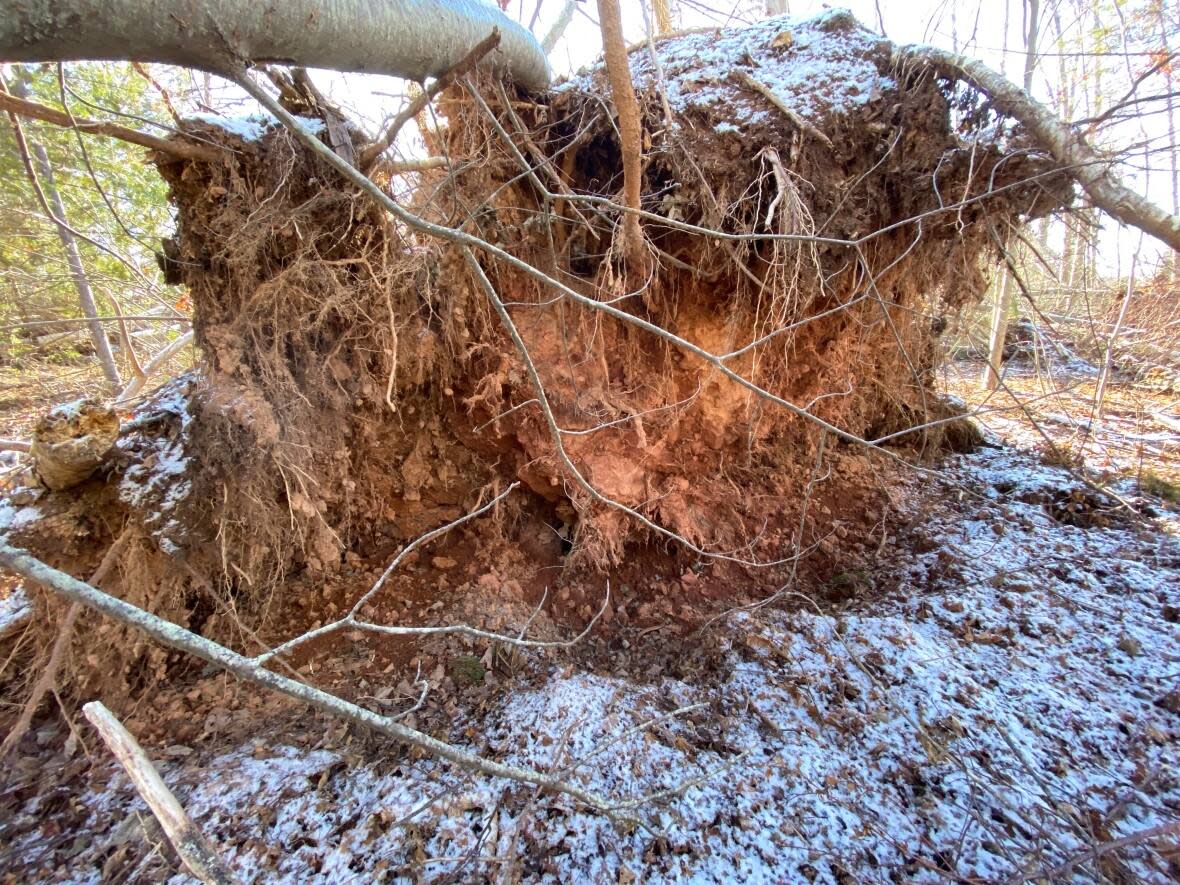Fiona tree damage on P.E.I. leaves big holes but little danger

Almost everywhere you look on Prince Edward Island, you can see trees ripped out of the ground by post-tropical storm Fiona, leaving exposed roots and large holes.
An arborist and a forestry expert said the tree roots may be hard on the eyes, but they will eventually decay, and could potentially be of benefit to future forests.
Kurt Laird, an arborist with Laird Tree Care said the fallen trees, and the holes they create, cause a couple of concerns.
"One is aesthetics, the other is safety, because people can fall in them, or kids can play in them," Laird said. "There is an aspect of safety involved, but the biggest probably is aesthetics."

Laird said the majority of his customers wants stumps and root balls removed, unless they want to incorporate them into a garden, or put a bird bath on them.
But, he said, if you leave them, they won't last forever.
"They'll just decompose over time, the dirt will fall off, for the most part," Laird said.
"Some trees may grow back even off the stump, things like willow or poplar."

Laird said it will be interesting in the spring to see which trees are able to recover from the Fiona damage, if enough of the roots are intact.
"If the tree pushes out leaves in the springtime, the tree doesn't need to be up and down, it'll correct itself over time," Laird said.
"It's us that like them to be straight up and down, not them."
Potential benefits
Gary Schneider of the Macphail Woods Ecological Forestry Project said the holes left by the fallen trees could have future benefits to the forest.
"If you're into nature, you're probably going to get much higher nature values leaving the hole to become, in spring, maybe a pool for amphibians," Schneider said.
"Sometimes people don't like that. But in the forest, I'm telling people not to fill those in, unless it's going to be a danger to you."

"It doesn't look like this forever. When you go through woods, and you see what they call pit and mounds, you see humps and then divots," Schneider said.
"That's from trees falling over, and it's a very natural occurrence. It just doesn't happen on this scale often."
It's a very natural occurrence. It just doesn't happen on this scale often.
—Gary Schneider, Macphail Woods Ecological Forestry Project
Schneider is leading the rehabilitation of the woods at Victoria Park in Charlottetown, including hundreds of exposed tree roots.
"Anything that poses a danger to the public, we will deal with. We'll have to bring in soil to fill in those roots, if there's none nearby," Schneider said.
"The trees that are in the woods, we will be leaving those, or maybe putting our brush piles on top of them. But it's a natural part of how forests develop and keep improving."
Build a better forest
Schneider said the look of the woods will be different at Victoria Park, as it will in many places across the Island.
"My first instinct was just to hang my head, and walk away, and go into a cave, and not have to look at any of this stuff," Schneider said.
"But I think we can do better, right? This was a bad forest that we were working on, unhealthy forest. We can speed that up."

"The extra light that's going to come into all these forests, including Victoria Park. We walk through areas and you see seedlings all over the place, and they're just waiting for the light to hit them."
Schneider said there is potential to create a better forest, in the wake of Fiona.
"I think there's going to be a real jump in growth, if we can put in the right species," Schneider said.
"If we can stop pounding in white spruce plantations, and start adding red oak, which is a really deep-rooted, long-lived, strong tree, sugar maples, yellow birch. I think we can build a better forest."

"The other silver lining is that people start to realize how much they loved forests, and how important they are, and maybe they took it for granted," Schneider said.
"When they see all this damage, it's kind of heartbreaking for people, and that means you've got to care."


